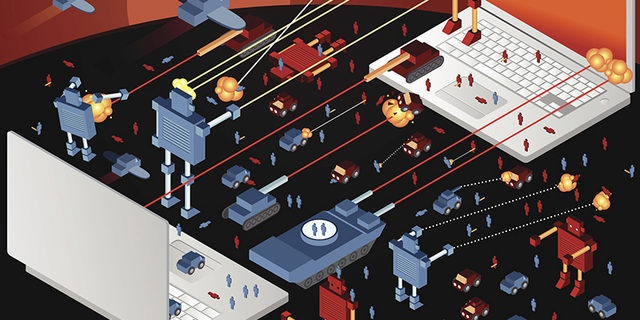I've been selling RPA - which includes surface integration, robotic desktop automation (RDA), user interface (UI) optimization, and robotic process automation (RPA) - for over 30 years, and I've seen it revolutionize the way a company does business, but only when incorporated into a properly designed system. I've seen organizations get many times a purchase's value in return by using RPA to bridge the gap between their systems, but I've also seen the opposite. Too many companies bought RPA software and incorporated it into their systems without significantly re-engineering their business process enough to receive the full benefit, despite my efforts and their internal champions' efforts.
What are they missing?
Today, integration, case management, process reengineering, and newer advanced technologies like natural language processing are coming together to deliver new levels of strategic automation. RPA is a part of this growing toolset, but by itself, it will not ever deliver "end-to-end" transformation. It's very good at the tactical replication of "manual" human work against older legacy systems. Just as an automatic car is not the same as an autonomously driving intelligent vehicle, RPA by itself is not end-to-end automation.
In fact, the word automation means something significantly bigger. It means that people are using technology to deliver transformation and simplification. Demand for change is coming in faster than ever. Real change now comes from the consumption side (either B2-B or B2-C). Buyers want to engage differently, and enterprises must change to react (and, hence, compete) with how their customers want to transact, which is at any time and on any device.
Use a strategy that reworks your workflow
Strategic automation technologies are growing at a faster pace today than tactical ones. Did you know you can start building and maintaining new strategic applications significantly faster and cheaper than you've ever been able to do so, often in days or weeks? You can build end-to-end journeys and processes without coding by using model-driven platforms that scale to meet IT needs while allowing for business-driven change. That spells freedom for so many organizations seeing complexity in their tools rocket their agility and usability to obsolescence.
Today, you can build and deploy on your choice of platform, be it a public cloud, private cloud, or mixed (or change your mind and simply switch later). You can deliver applications to any current or future device without even thinking about it, even engaging with new channels like chatbots and virtual assistants. Within this single platform, you have AI built in, and it's making real-time recommendations for the Next Best Action at every interaction point, often even before your customer reaches out to you.
Wrapping AI in front or around RPA does not make RPA any more intelligent. In fact, most RPA advertised as AI or "cognitive" is simply just a repackaging of ever-evolving Optical Character Recognition (OCR) technologies. Know your market. Who actually delivers on promises today with real, functioning technology?
Make sure you really do tap RPA's power
RPA is powerful. It can replicate repetitive, manual tasks to make an employee's experience better and more productive. Using AI as a feed to RPA by allowing robots to consume unstructured and structured data is a very real and very good thing. AI, machine learning, and intelligent OCR are all things that can help drive more automation of old manual tasks through RPA, but fundamentally you're still just automating the same old manual tasks. You're repaving the cowpath with increasingly better tar, but you aren't building a new superhighway. However, redesigning experiences by embedding AI at the heart of every customer interaction to drive real-time change will have a more significant impact on your business over the medium and long term.
Use RPA to accelerate your transformation, to connect systems that are otherwise not connectable, or to make your employees happier and more productive. But please do not believe that RPA is your endpoint for transformation. The real work is much harder — and the impacts far more significant.
Learn more:
- Discover how robotic automation can transform your operations to get work done faster.

